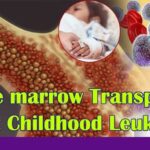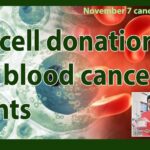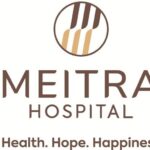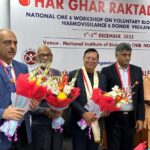Bengaluru: As we head closer to World Marrow Donor Day, Mazumdar Shaw Cancer Centre at Narayana Health City – one of the leading Blood and Marrow Stem Cell Transplant units in India highlights alarming cases of two Cambodian sisters aged 9 and 11 years; their hero and saviour being a 11-month-old sibling and half HLA matched father. With Bone Marrow Transplant being the only cure for Thalassemia, it becomes very important to find a matching donor for such treatment.
“It is highly unlikely to find an unrelated donor for Cambodian descent patients as there is no Cambodian donor registry and number of Cambodian donors in other registries are almost negligible”, informed Dr. Sunil Bhat, Head – Paediatric Oncology, Haematology and Bone Marrow Transplant at Mazumdar Shaw Cancer Centre, Narayana Health City.
It was a big shock for this couple from Cambodia to have two consecutive children – both girls, suffering from Thalassemia – a potentially lethal disease. Both sisters were diagnosed with Thalassemia major – a disease that requires life-long blood transfusion every few weeks. “Most of the affected patients usually die in the second to fourth decade of life”, confirmed Dr. Sunil Bhat.
Fortunately, almost eight years after the second child was born, the family was blessed with a baby boy who was normal and did not suffer from Thalassemia. The father being a doctor by profession had made every possible effort to provide the best care to both his affected daughters. However, it was getting difficult for him in Cambodia. Giving adequate, safe and effective blood transfusions and managing the complications of iron overload was becoming a challenge to the family. They had learnt that Bone Marrow Transplant is the only cure for this condition.
Affirming that Bone Marrow Transplant (BMT) is the only cure for many life-threatening diseases, Dr. Sunil Bhat said, “For more than 100 potentially life-threatening diseases, bone marrow transplant or blood stem cell transplant is the only cure. These diseases range from cancers such as leukaemia, lymphoma, solid cancers to genetic disorders of blood forming cells and immune system like thalassemia major, sickle cell anaemia, severe immunodeficiency disorders. With increasing number of haematological disorders, the number of patients requiring a blood stem cell transplant is also increasing. There are more than 1, 00,000 patients with serious blood disorders diagnosed in India every year and they can be cured with a BMT. One of the major differences between bone marrow transplant and solid organ transplants like liver and kidney is that in BMT we need to match HLA of the patient and the donor. The chance of a patient finding a matched donor within family is only 25% to 30%; this leaves about 70% patients needing BMT for the cure of their disease but don’t have a matching donor”.


However, her elder sister was not so lucky as she couldn’t get a fully matched donor. Therefore, her transplant was even more challenging. She did not have any HLA matched donor either in the family or anywhere in the World. The next possibility was a Haplo-identical transplant. Doctors at Mazumdar Shaw Cancer Centre at Narayana Health City decided to use the stem cells of the father who was a half match with the elder daughter. A new technique was used in haplo (half matched) transplant as the donor stem cells were not fully matching the patient. “Her bad cells were taken out in a procedure called TCR alpha-beta depletion and only the good cells were given to the patient”, explained Dr. Sunil Bhat. “This avoids the risk of donor cells attacking the patient’s body”, he said.
Although this technique helps in the above mentioned mechanism, it would delay the immune recovery, which would put them at risk of serious infections. “To address this issue of slow immune recovery, CD45RA depletion is an additional technique recently introduced”, informed Dr. Sunil. “This helps us to give memory cells, which can fight infections in the patient”, he said. This new technique has probably been used for the first time in India for the treatment of Thalassemia major.
The transplant using this technique was performed on the elder girl in June this year and she is also cured of her disease completely.













